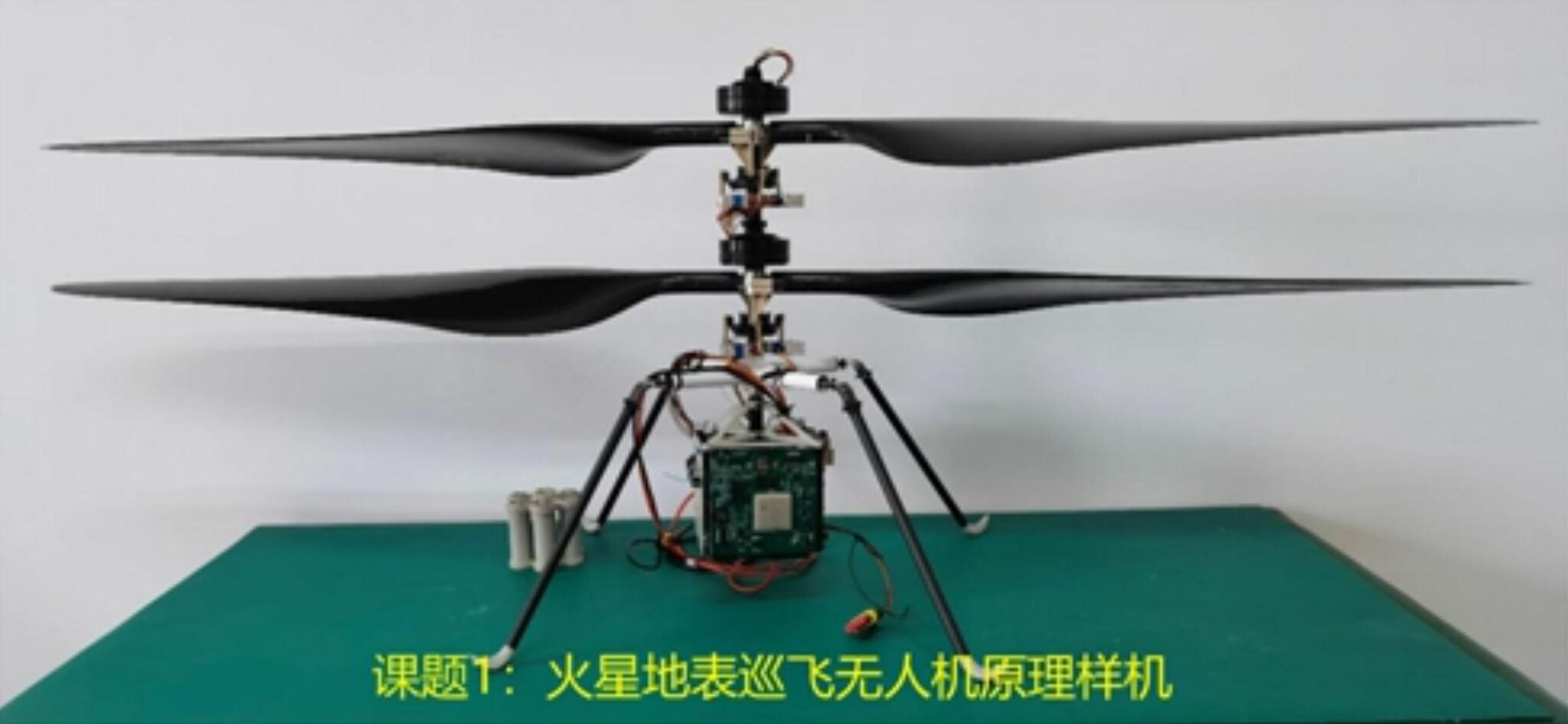China unveils prototype Mars helicopter to guide rover in future missions
Drone is similar to Nasa’s Ingenuity helicopter and can reportedly travel several hundred metres in a single flight

China has developed a prototype Mars drone helicopter for future missions to the Red Planet, where it could help a rover navigate the Martian surface, take photographs and analyse the landscape.
The prototype “Mars surface cruise drone” looks remarkably similar to Nasa’s Ingenuity helicopter, which is currently deployed exploring the Red Planet. China’s drone passed a final acceptance review on 20 August, according to the National Space Science Center (NSSC) under the Chinese Academy of Science.
The state-run Global Times newspaper reported that the drone is capable of capturing images and travelling several hundred metres in a single flight, and could assist a rover in locating and driving towards landscape features on Mars with greater speed and precision.
The NSSC said in a statement that the helicopter would advance to the next stage of development, but it did not delve into any details on any future mission in which the drone may fly.
Bian Chunjiang, an NSSC scientist, told Global Times that further research would test the drone’s survival capability for long periods in the complex Martian environment.
NSSC scientists are also reportedly in discussions over whether the drone would be powered by solar energy or a wireless electricity-charging method, or a mixture of both.
In an interview with the journal National Science Review in February, Chi Wang, the Scientific Payload Sub-System Director of Tianwen-1 – China’s first mission to Mars – said helicopters would be an important tool for future Mars exploration.
“Helicopters can fill the gap of middle-scale observation between the large-scale observation of orbiters and the local-scale observation of rovers. Compared to ground rovers, helicopters can go faster and farther,” Wang said.
“They can also access steep and complex landforms which cannot be reached by ground rovers,” he added.
Nasa’s Ingenuity has already proved to be successful beyond expectations in its missions on Mars.
Initially planned to be a technology demonstration to test the first powered flight on Mars, Ingenuity is now helping the Perseverance rover navigate to new parts of the Red Planet.
The 1.8 kg helicopter is currently part of a new operations demonstration phase to explore how future rovers and aerial explorers can work together.
By mid-July, the helicopter had covered its first mile in its 10th and highest flight on the Red Planet.
The Ingenuity rotorcraft design, which was stress-tested by Nasa in chambers on Earth simulating Martian atmospheric conditions, has proven to be a successful model for future aerial explorers for the Red Planet, as China’s prototype would attest.
According to Bian, the two blades with a common axis model is the best technological path to date, surpassing other methods for vertical take-off and landing on the thin Martian atmosphere where the air pressure is only 0.7 to 0.8 per cent of that on the Earth’s surface – equivalent to the pressure at an altitude of 30 to 40 km above Earth’s surface.
Join our commenting forum
Join thought-provoking conversations, follow other Independent readers and see their replies
Comments
Bookmark popover
Removed from bookmarks